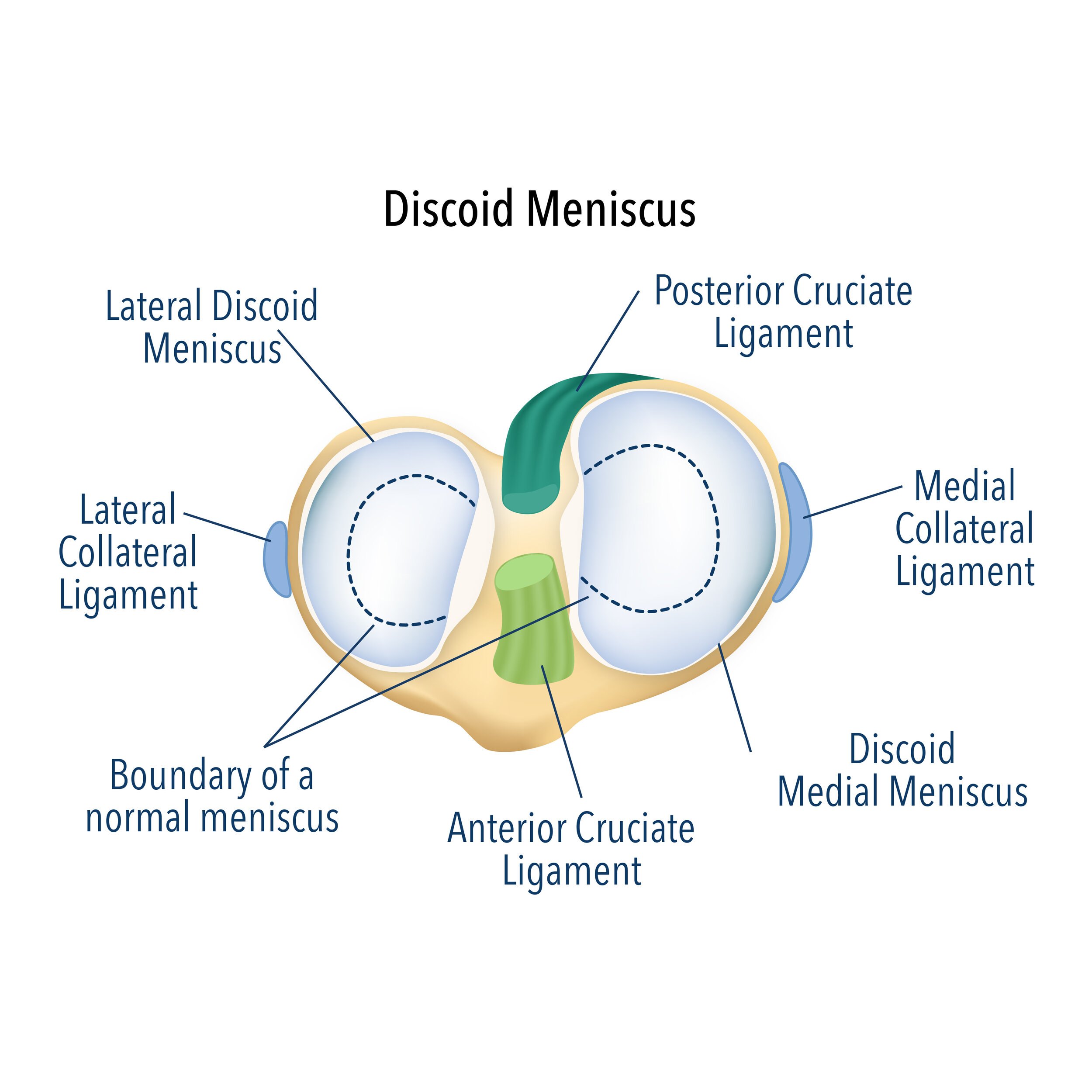Discoid Meniscus
What is a discoid meniscus?
The meniscus acts like a shock absorber in the knee joint. It is a C-shaped structure that lies between the femur and tibia. Each knee has 2 menisci, one on the inside (medial) and one on the outside (lateral).
A discoid meniscus is thicker than normal and oval-shaped (rather than C-shaped). It may lack the normal peripheral attachments that give the meniscus stability. The outside (lateral) meniscus is more commonly affected. Discoid menisci can affect both knees.
What are the symptoms of a discoid meniscus?
Although a discoid meniscus is more prone to injury, many patients go through their entire lives and never experience any related problems.
However, a torn or unstable discoid meniscus can sometimes cause knee pain, popping, snapping, or an inability to fully straighten the knee.
How do you treat a discoid meniscus?
No surgery is recommended for a discoid meniscus in the absence of symptoms. If there are significant symptoms, the condition will be confirmed by obtaining an MRI scan of the knee.
What does surgery for a discoid meniscus involve?
A symptomatic discoid meniscus can be treated with keyhole (arthroscopic) surgery. The surgery involves “saucerising” the discoid meniscus to restore its normal C-shape. The stability of the meniscus is also assessed. Occasionally, the meniscus may need to be repaired to the surrounding capsule to restore stability. Meniscal repair surgery involves a small open incision on the side of the knee which may be required to achieve a good repair.

